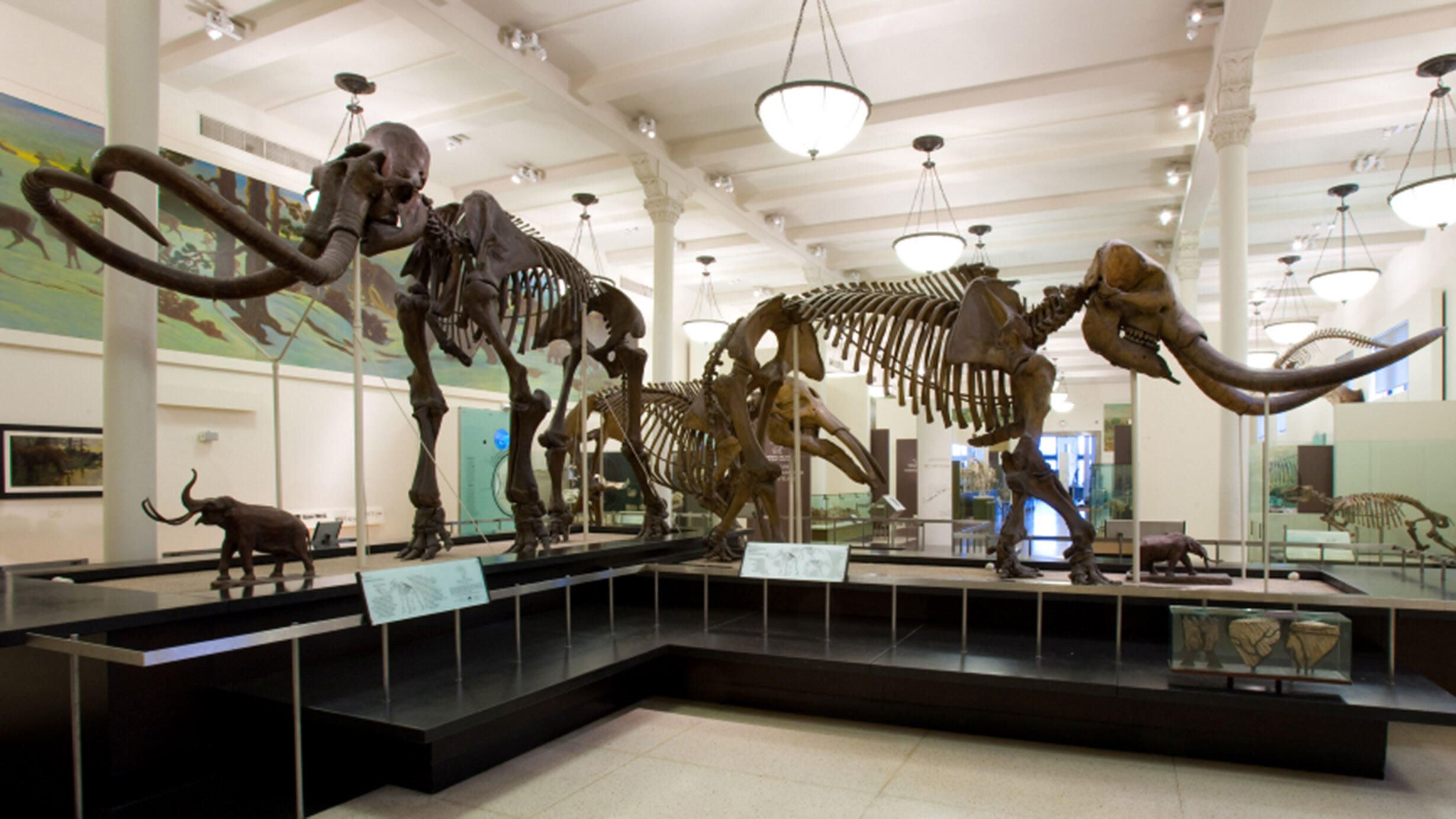 Slight differences in skull, tooth, and tusk shape set these extinct proboscideans apart.
Slight differences in skull, tooth, and tusk shape set these extinct proboscideans apart. D. Finnin/©AMNH
So much so that they are often confused for one another.
Both were large and hairy distant cousins of modern elephants. Both were proboscideans, so they had trunks. And, although isolated woolly mammoth populations persisted on high-latitude islands in the northern hemisphere until 4–6,000 years ago, elsewhere both were extinct by 11–12,000 years ago.
So, how can we tell these extinct behemoth herbivores apart? It’s all in the head!
First, mastodons had flatter heads, while mammoths had a distinctive knob on top of their skulls, formed by a bulbous protrusion of bone. Both had long upper tusks, but mammoth tusks grew at a curve, sometimes even crossing in front of each other. Mastodons had more linear tusks, and some even formed a small chin tusk on their lower jaw.
D. Finnin/©AMNH
More distinguishing characteristics can be found inside the mouth. “The big difference is the teeth,” says Curator Ross MacPhee, a mammalogist in the Museum’s Division of Vertebrate Zoology.
"The big difference is the teeth."
The molars of mastodons featured cone-shaped cusps suited for crushing twigs and other kinds of vegetation. The name mastodon literally means “breast tooth,” referring to the the “nipple”-shaped bumps along the top edges of these animals’ teeth. Mammoths, on the other hand, had ridged teeth—ideal for grazing and grinding tough grasses into small bits, like modern elephants.
D. Finnin/©AMNH
While mastodons look a lot like modern elephants, they are not closely related. The ancestors of modern elephants and mammoths went their separate ways about 5 million years ago, and mastodons branched off even earlier, about 25 million years ago.
What would it take to bring back the woolly mammoth? Explore the science of de-extinction.
But be mindful not to get your mammoths confused. The woolly mammoth (Mammuthus primigenius) is just one of several mammoth species. But though it’s the last-known to have gone extinct, it wasn’t even the largest. So why is it so famous?
Find out what scientists have learned from mummified woolly mammoths.
“Because it is so weird!” says MacPhee. “We assume living elephants are hairless—well, they have hair, but it’s very sparse. Living in a cold climate, woolly mammoths had a huge investment in having long hair, along with lots of body fat.”
Visit the Paul and Irma Milstein Hall of Advanced Mammals on the Museum's fourth floor to see a mammoth skeleton and the Warren mastodon.